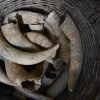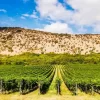If you ever consider taking the brewing intermediate course and exam of the specialty coffee association (SCA) you will be provided with a solid framework when it comes to filter coffee making. During the two days I have made countless brews -mainly V60- measuring the total density solids (TDS) calculating extraction rates and finding the “sweet spot” on the Coffee Control Brewing Chart. While I cannot share you the picture of the SCA brewing chart but if click on this link you get a full lecture from the SCA on this topic.
To give you an idea on the process:
Taking notes of the coffee to water ration, meaning you measure the coffee used (in g) and the water quantity poured over the grounded coffee (in g). After the pour is done you have to measure the final quantity of the coffee.
Measure the TDS of the coffee as it cools in decreases, more expensive equipments provide a better and faster results but after you´re getting a number usually in percentage of dried matter. Multiplied the coffee outcome (g) by the % of TDS this will be the extraction rate in %. Now dividing this number by the coffee you used (g) and you get the figure in % of extraction. By using this number and the TDS from the fancy fluid conductivity equipment you will have two points on the chart which you just have to link to each other and voile you´re hopefully around the “middle” the ideal box.
 To give you an more precise examples with actual figures:
To give you an more precise examples with actual figures:
We use 15 g of coffee and 280 ml of water. A ratio to 1:18,6: for 1 g of coffee we use 18,6 g of water. Looking at the Coffee Brewing Control Chart´s diagonals with this ratio we´re the chances are more likely for an “weaker” coffee here.
But let´s see further the outcome in this particular coffee was 244 ml (V60) and the strength with on the TDS showed 1,29%. Now multiplying 244 (actual coffee quantity) x 1,29% (soluble concentration) = 3,147% extraction. Taking this figure 3,147 / 15 (the coffee used) = 20,9% soluble yield. Looking at the chart we´re in the ideal range, however on the over extracted side with a medium “body” strength.
This of course does not mean that our coffee is perfect but shows that the majority of the people would most likely enjoy it at it shares one quality trademark: balance.
Now with an immersion method (e.g. French press, aeropress) the outcome must not -as most people suggest- be measured separately. The ideal numbers for espresso would be also different! So for the sake of simplicity let just stick to filter coffee (drip, immersion) here.
An ideal filter coffee would have the necessary sweetness, aromas, flavours, freshness and notable complexity. But foremost you would enjoy it as a coffee lover and try to replicate as best as possible again and again.
But if there needs to be some adjustment along the line the following elements may be considered to be adjusted:
- coffee to water ratio (see chart for more detail)
- grind size (e.g. finer grind size gives more extraction longer brewing time, hence more bitterness possibly and vice versa)
- temperature of water (lower temperature could result in under-extraction, hence less acidity and flavour)
- agitation of coffee (more turbulence could cause longer time in the flow, drip rate)
- …and of course the quality of the water amongst many other things play a crucial role.
Enjoy experimenting and happy brewing!






